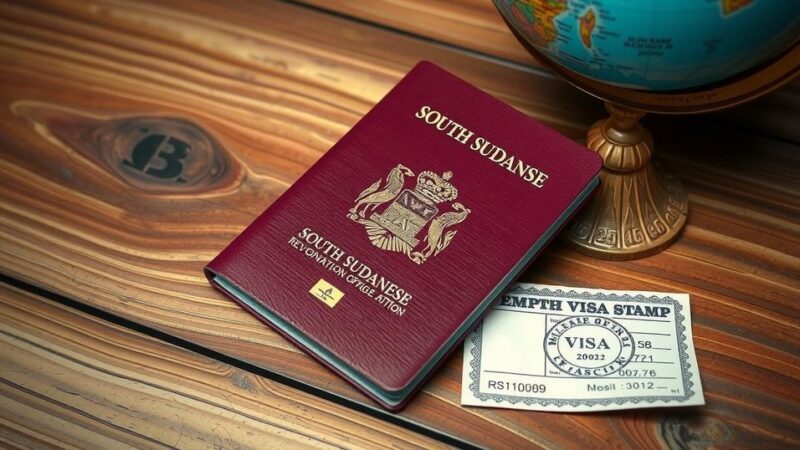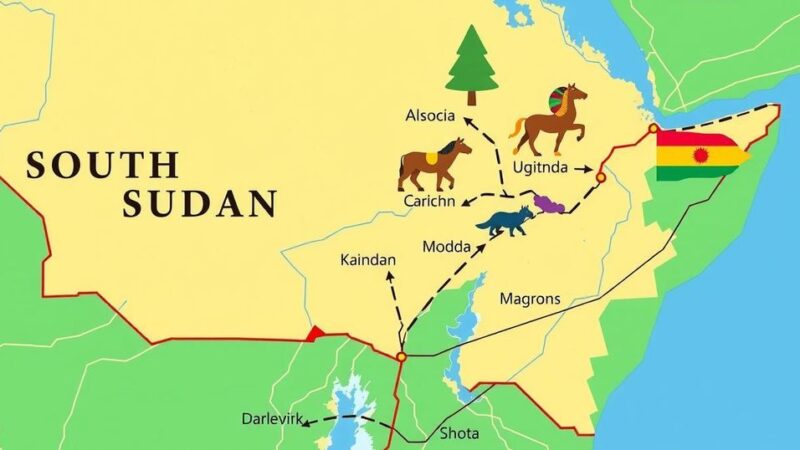The Lebanese army has entered Hawsh Al-Sayyid Ali to stabilize the area after recent violent clashes along the Lebanese-Syrian border. The deployment aims to secure borders and close illegal crossings amid escalating tensions following the deaths of several individuals in conflicts among smugglers and new Syrian authorities. Communications between Lebanon and Syria are ongoing to ensure ceasefires and restore calm.
On Wednesday, the Lebanese army advanced into Hawsh Al-Sayyid Ali, a town along Lebanon’s eastern border with Syria. The deployment of army vehicles reached the town’s administrative border, scrutinized according to official Lebanese state maps, which delineate portions of the town within Syrian territory inhabited by Lebanese citizens.
This military presence was prompted by recent violent clashes driven by conflicts among smugglers in the region, particularly following the deaths of three Syrian gunmen. The subsequent confrontation expanded into a larger conflict between local Lebanese tribes and armed factions representing the new Syrian authorities.
According to the Lebanese Ministry of Health, the violent encounters have claimed the lives of at least seven Lebanese citizens and left 52 others injured, alongside substantial damage to property due to shelling between conflicting forces. These developments caused forces linked to the Syrian Ministry of Defense to enter the Syrian segment of the town on Monday.
Negotiations about deployment zones based on border maps delayed the Lebanese army’s operations. An army convoy of 60 vehicles ultimately approached Hawsh Al-Sayyid Ali, where initial deployment met with protests concerning local clan weapon confiscation. However, stability was reestablished, enabling the army to continue its mission effectively.
The Lebanese army has initiated security measures in the Hermel region, including patrol deployments aimed at sustaining peace along the border. Notably, measures were instituted to close illegal crossings between Lebanon and Syria, targeting areas such as Al-Matlaba and Al-Fatha, among others.
President Joseph Aoun has actively followed developments along the northeastern border, conducting communications with army Chief Gen. Rodolphe Haikal. Reports emphasize the president’s commitment to restoring calm and mandating action against any ongoing aggressions along the border.
Intensified communications between Lebanese and Syrian officials have resulted in efforts to establish ceasefires concerning the border incidents, culminating in a ceasefire agreement after discussions between the respective defense ministers.
Reports from Syrian media indicated that Syrian forces seized a Hezbollah operations room within Hawsh Al-Sayyid Ali, which allegedly contained a significant cache of weapons and materials associated with drug manufacturing. Subsequently, displaced families from the area began to return to their homes, despite Hezbollah’s denial of involvement in the border conflicts.
The situation along the Lebanese-Syrian border remains tense but has seen significant military mobilization from the Lebanese army to establish control and restore order. Recent clashes resulting in casualties and property damage have prompted both countries to negotiate ceasefire agreements. President Aoun’s directive emphasizes the need for stability, and the Lebanese army is actively working to secure illegal crossings and prevent further conflict. As families return to their homes post-conflict, the ongoing dialogues between Lebanon and Syria continue to be crucial in maintaining peace in the region.
Original Source: www.arabnews.com






